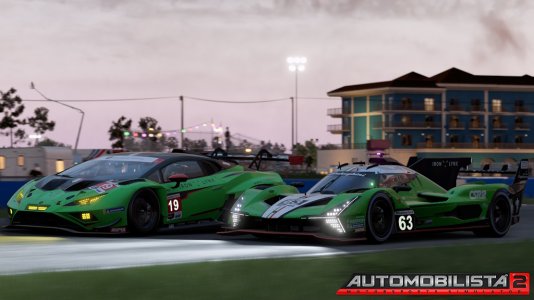Hi,
last month I bought my first wheel Thrustmaster T-GT and got hooked up in no time , then I figured I would need a rig, so I started with Next Level Racing GTUltimate V2. Despite good reviews, I haven’t liked it, the seat had a lot of flex and weird shape for me, so I returned it. Ever since I’m reading through the forums figuring out how to improve my setup, which is desk and wooden chair right now
, then I figured I would need a rig, so I started with Next Level Racing GTUltimate V2. Despite good reviews, I haven’t liked it, the seat had a lot of flex and weird shape for me, so I returned it. Ever since I’m reading through the forums figuring out how to improve my setup, which is desk and wooden chair right now  .
.
I have just ordered rseat N1 and HPP 3P-PRX-SE pedals as T-GT pedals were lacking, now I have some time meanwhile the orders arrives, so I’m figuring what to do next and tactile seems to be next best upgrade, so driving doesn’t feel so “dead”, although even without tactile this is most fun I had on PC ever .
.
As for the plans, I will be keeping T-GT steering wheel for now. Currently I’m building DYI handbrake, I have some parts ordered, so when I have some progress, I will put some photos up, maybe with little step by step tutorial if it will be interesting for anyone (I’m total beginner so I will be figuring everything out as I go). It will be simple load cell handbrake.
So far I ordered Handbrake, Load Cell, Controller Board, I hope it all fits together. I will solve mechanical part when I get my hands on the handbrake. I was thinking about hydraulics, but it seems lot more complicated and expensive. Especially when for example HE are using also just load cells in their top of the line pedals, so I figured it must be good enough for DYI handbrake as well .
.
For now I’m running laptop with CORE I7 and Geforce 1060 6GB and 24’’ monitor. This will be my next goal after tactile, but I will probably wait until summer or later when new graphic cards arrive and TVs with HDMI 2.1 with VRR (variable refresh rate) and possibly VR, this will be long wait, but I will at least have some time to gather some finances .
.
Then I would like to get DD wheel and in more distant future I would like to get seat mover, probably Next Level Racing Motion Platform V3 as it integrates with rseat N1 quite nicely. My inspiration is Diablo2112 rig, it looks absolutely fantastic!
I will be eternally grateful for any help / advice anyone can give. Many thanks!
last month I bought my first wheel Thrustmaster T-GT and got hooked up in no time
I have just ordered rseat N1 and HPP 3P-PRX-SE pedals as T-GT pedals were lacking, now I have some time meanwhile the orders arrives, so I’m figuring what to do next and tactile seems to be next best upgrade, so driving doesn’t feel so “dead”, although even without tactile this is most fun I had on PC ever
As for the plans, I will be keeping T-GT steering wheel for now. Currently I’m building DYI handbrake, I have some parts ordered, so when I have some progress, I will put some photos up, maybe with little step by step tutorial if it will be interesting for anyone (I’m total beginner so I will be figuring everything out as I go). It will be simple load cell handbrake.
So far I ordered Handbrake, Load Cell, Controller Board, I hope it all fits together. I will solve mechanical part when I get my hands on the handbrake. I was thinking about hydraulics, but it seems lot more complicated and expensive. Especially when for example HE are using also just load cells in their top of the line pedals, so I figured it must be good enough for DYI handbrake as well
For now I’m running laptop with CORE I7 and Geforce 1060 6GB and 24’’ monitor. This will be my next goal after tactile, but I will probably wait until summer or later when new graphic cards arrive and TVs with HDMI 2.1 with VRR (variable refresh rate) and possibly VR, this will be long wait, but I will at least have some time to gather some finances
Then I would like to get DD wheel and in more distant future I would like to get seat mover, probably Next Level Racing Motion Platform V3 as it integrates with rseat N1 quite nicely. My inspiration is Diablo2112 rig, it looks absolutely fantastic!
I will be eternally grateful for any help / advice anyone can give. Many thanks!

















